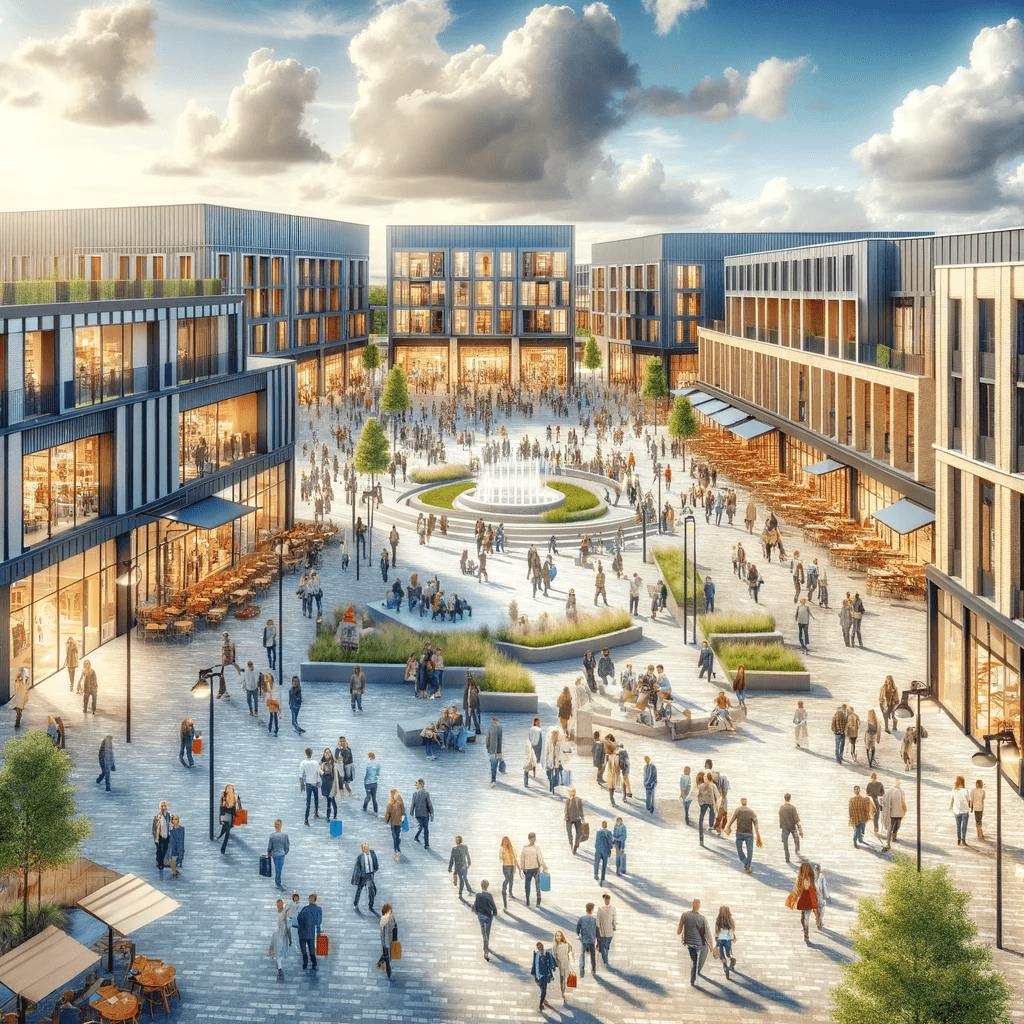Madison Heights Town Center: A Catalyst for Regional Development
In a move poised to redefine the economic and urban landscape of Amherst County, the Madison Heights Town Center is ushering in a new era of development. This ambitious project, blending residential and commercial spaces, is expected to catalyze significant economic growth in the region. By attracting new businesses and creating job opportunities, the Town Center is set to become a hub of activity and innovation.

The introduction of various housing options, from modern apartments to spacious single-family homes, aligns with the growing housing needs of the area. This diversification in living spaces not only enhances the residential appeal of Madison Heights but also promises a more vibrant community fabric.
Strategically located on U.S. 29 Business, the Town Center bridges Madison Heights with neighboring areas, including downtown Lynchburg. This enhanced connectivity could lead to increased commercial and cultural exchanges, benefiting businesses and residents alike. However, the development also poses questions about its impact on downtown Lynchburg. While there’s potential for some commercial activities to shift towards the new center, the overall regional growth could lead to a symbiotic relationship, where both Madison Heights and Lynchburg thrive from the shared economic and infrastructural uplift.
In essence, the Madison Heights Town Center is not just a development project; it’s a vision for a more interconnected and prosperous region, where growth and community go hand in hand.
Commonly Known Facts:
- The Madison Heights Town Center is a significant mixed-use development project on U.S. 29 Business in Amherst County.
- The project involves the construction of hundreds of residential units, including apartments and single-family homes, along with commercial spaces and recreational areas.
- It is the first project approved under the mixed-use/traditional neighborhood (MU/TND) zoning district in the county.
Lesser-Known Facts for Further Research:
- The Amherst County Planning Commission is recommending a code change to facilitate this development.
- This ordinance change will allow multi-family dwellings to exceed a 15-foot maximum front yard setback, aiding the project’s design flexibility.
- The change is partially a response to the challenging topography of the approximately 180-acre project site.
- The special exception process will involve public hearings by the Planning Commission and the Board of Supervisors.
Recent demographic information for Madison Heights, Virginia, highlights several key aspects of the community as of 2023:

Here is a graph illustrating the population trend in Madison Heights, VA, from 2020 to 2023. As depicted, there was a notable decline in population between 2020 and 2021, with the number stabilizing in 2023. This visual representation helps to clearly understand the demographic changes in the area over these years.
- Population: Madison Heights has a population of approximately 10,790. This reflects a decrease from the 2021 figure of 10,800, marking a decline rate of around -5.74% from 2020 to 2021.
- Area: The community covers an area of 19.2 square miles, with a population density of about 562.8 people per square mile.
- Income and Poverty: The average household income in Madison Heights is around $67,928, with a poverty rate of 12.58%. However, the median household income was reported to be $49,928 in 2021, slightly down from $50,137 in 2020.
- Age Distribution: The population is distributed across various age groups with 6.2% under 5 years, 14.6% between 5-17 years, 6.3% aged 18-24, 11.2% between 25-34, 25.2% aged 35-54, 16.2% between 55-64, and 20.4% over 65 years.
- Education: Among adults, 88.0% are high school graduates, and 17.1% have graduated from college.
This demographic profile provides a comprehensive view of the current state of Madison Heights, vital for understanding the potential impacts of the Town Center development on the community.

